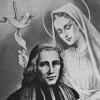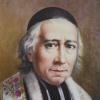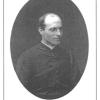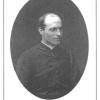E-Publications
NACMS has classified our publications by level to aid you in finding material most helpful to you:
- Basic for those new to the Marianist world and having little or no prior knowledge of Marianist history or the Marianist charism
- Intermediate for those who have some knowledge and understanding of things Marianist
- Advanced for those who have significant knowledge and understanding of things Marianist and want to go deeper
- Resource materials, including prayers, activities, and reflections for individuals and groups
- Reference materials, including source documents and compendia
You can filter or search our publications below using the Keyword Search function or the "Explore Our Resources" function on the left.
The Three O'Clock PrayerJean-Baptiste Armbruster, SM, traces the origin and evolution of the Three O'Clock Prayer. (The prayer's purpose and meaning has changed over time.) He culminates his work with proposals on using it today. |
|
Chaminade and MaryAccording to Johann G. Roten, SM: "Chaminade was more than a moralist; he was a prophet who proclaimed courageously the victory of Christ, whose most beautiful work is the Virgin Mary. Indeed, his thought is definitely more Christological and ecclesial than Marian." |
|
Leadership in the Marianist TraditionFather James L. Heft, SM, highlights three insights from the Marianist tradition of education--collaboration, the careful linking of heart and head, and an emphasis on institutional change--that can assist in the development of leadership. |
|
Chaminade and Adversity: A ConversationBrother Timothy Phillips, SM, a Marianist scholar and formator, and Anthony Garascia, a professional counselor, discuss challenges involved in Blessed Chaminade’s long life. |
|
A Short History of Marianist SpiritualityEver attentive to language, Lawrence J. Cada, SM, examines the evolution of many phrases and concepts dear to Marianists and carves a solid analysis for why Marianist spirituality is fundamentally “lay,” “adaptive,” and “Modern.” |
|
Relations Between the Institute of the Daughters of Mary and the Society of MaryThe article explores the troubled relationship between the Daughters of Mary and the Society of Mary, following Blessed Chaminade's death. |
|
Relations Between the Society of Mary and the Daughters of MaryFather Joseph Stefanelli, SM, explores the healing process that took place in response to divisions which developed between the Daughters of Mary and Society of Mary after the death of Blessed Chaminade. |
|
Sodality HistoryIn this article Marianist Brother Timothy Phillips traces the origin of the first Sodality. He writes: “The real foundation of the Sodality goes back to Jan Leunis, a young Jesuit priest, not very gifted it seems in studies, but apparently very gifted in getting a group going. He was teaching at the Roman College . . . and decided to start a little group of his students in 1563. It worked surprisingly well; though these were the youngest children, the older students found it interesting and wanted to be a part of it." |
|
History of the Constitutions of the Daughters of Mary ImmaculateThis historical snapshot traces the name "Daughters of Mary," Chaminade's system of government for the FMI, and the drafting of the Constitutions for the Marianist Sisters. |
|
You Are the Body of ChristThe aim of Brother Hugh Bihl's essay is to expound a most important dimension of church theology—that we (i.e., the church members) are the Body of Christ. |
|
A Biography of Father Charles Klobb, SM: Ten ArticlesBehind every great leader is a great helper. Father Charles Klobb, SM, was such a great helper: retreat master preaching Jesus and Mary to a new generation of Brothers of Mary; historian tirelessly reclaiming the life of Father Chaminade; and trusted aide to Superior General Joseph Simler. Klobb accomplished much during his mere four decades of life. |
|
Charles Klobb: Apostle of Father ChaminadePaul Verrier, SM, provides a brief biographical sketch on an early Marianist historian--Father Charles Klobb--a man who found service through reclaiming the Marianist story |
|
Principles of Direction of Blessed William Joseph ChaminadeWhy would Chaminade make 23 attempts to formulate a Manual of Direction to give to his leaders? According to Father Paul J. Landolfi, SM, to understand this, we must first consider the background of his work of predilection, the Sodality of Bordeaux. |
|
Let the Brothers of Mary Call No Man "Father"The Marianist story is radically open to the perspective of "discipleship of equals" because of the way daily life has been structured between those who are not ordained and those who are. |
|
Filial Devotion or Alliance with Mary?Father Benlloch provides a keen analysis of this Marianist question and explores its implications related to language and our relationship with Mary. |
|
Teamwork in the Society of MaryIn this circular, Brother Thomas Giardino, SM, as General Assistant for Education, reminds us that the true end goal of teamwork is not accomplishment but mission. He looks at the importance of dialogue and teamwork in this missionary endeavor. |
|
The Sacrament of Our MissionA mission so grand as ours will demonstrably fail, says Father William Ferree, SM; but in the economy of salvation, that failure is the sacramental veil of success. |
|
The Role of Marianist Educational Leaders in the Inculturation of Marianist Spirituality and PedagogyBlaise M. Mosengo, SM, writes that "Just as the generation of Marianist pioneers brought the spirituality of Marianist education to Africa, it is now time for African Marianist educators to address, in 'African languages,' different questions related to Marianist culture in school." |
|
Mary, Two Perspectives, United States and Eastern Africa, Interpretations for Contemporary Marianist LifeBrother Hugh W. Bihl, in this monograph, examines the cultures of the United States and of Eastern Africa for an interesting look at "motherhood" and Our Mother, Mary. |
|
The Five Silences, Missionary Disciples, and the Call to AccompanimentAnthony J. Garascia, as part of MSP 2.0, reminds us that Chaminade's Five Silences are not intended for just personal prayer or personal holiness. Rather, the end result should be movement to "accompaniment" and "action." Garascia also compares the System of Virtues to the formation process involved in RCIA. |


















